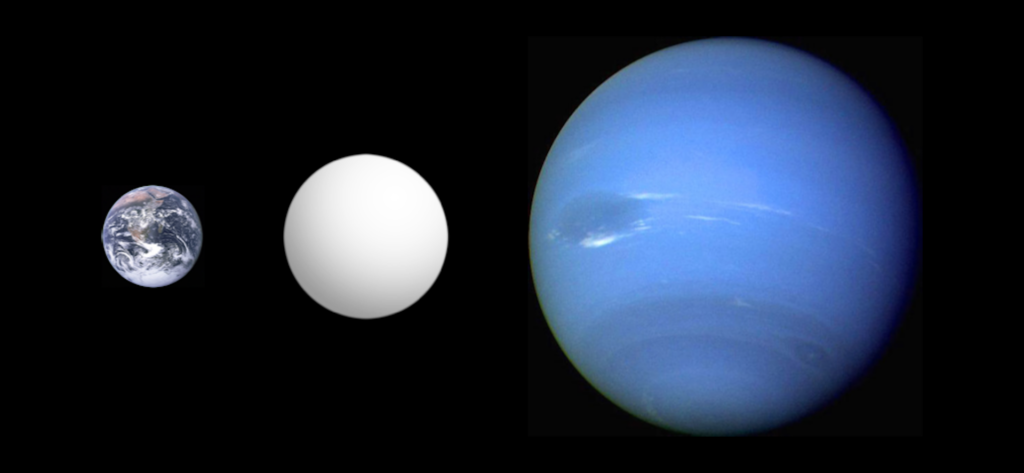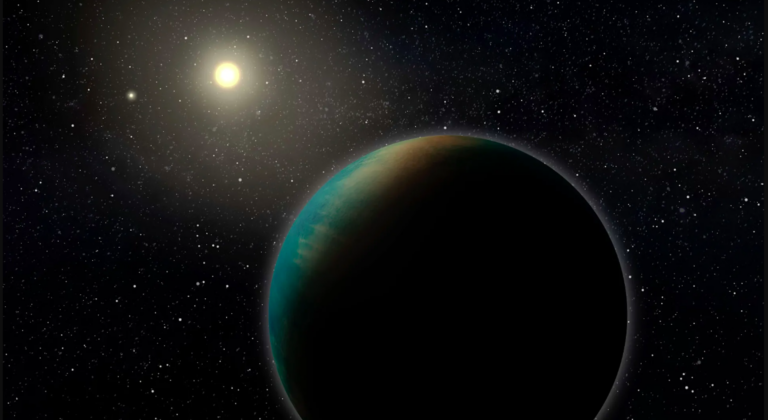Astronomers have discovered billions of super-earths that are larger, more abundant, and more suitable for habitation than Earth.
The exoplanets, which astronomers are now finding more often than not orbiting stars outside of our solar system, are thought to be different from the other planets that are known from our solar system. Nevertheless, a few planets in the habitable zones of their parent stars were the objects of major discoveries by the teams working on NASA’s Transiting Exoplanet Survey Satellite.
The planet’s planet is bigger about 30% than Earth and the star’s period is around three days. This might explain why the water covers the land on the planet which is 70% the size of Earth. Super-Earths, for instance, these two exoplanets, are smaller than ice giants like Neptune and Uranus but have masses greater than those of the Earth.
When conducting research in astronomy as a professor, I investigate exoplanets, astrobiology, stars beyond our galaxy, or galactic cores. I am always on the lookout for such ET-habitable planets by peeping through the telescope.
As for now, scientists know for sure that life exists only on Earth and not in any other place in the universe. Evidently, such planets as close as possible to our Earth type- “Earth Clones”- could be the first candidates for the search of extra-terrestrial life-forms. However, recent research demonstrated that the odds of astronomers discovering life on a planet are the highest for super-Earths. On the other hand, these super-Earths were the ones that seemed to have been just discovered.

Common and easy to find
Lifetimes of cool dwarf stars, which are less massive and live longer than the Sun, are usually larger and these types of stars most commonly host super-Earths. Each star like the Sun has hundreds of cool dwarfs. This has resulted in a discovery of 40% of the exoplanets whose orbits go round the super-Earths, according to the scientists. This number of super-Earths in the Milky Way, where theoretically there is a waterlike liquid, can range up to tens of billions. Water is the substance that is indispensable to all life on Earth, hence it is believed that water is the prerequisite of habitability.
Super-Earths exhibit the highest frequency of detection among exoplanets, with about one-third of all the exoplanets discovered projected to be of this kind. At three light-years away, it is the nearest star. Since our solar system does not have a planet with a mass that is in between Earth and Neptune, one could probably say that it is a unique system.

The Super-Earths that are of much importance to this search are those that are much easier to follow and observe in the quest to find life. Astronomers find exoplanets by using two techniques. One of them features a planet’s gravitational influence upon its parent star, while the second highlights the passing of a planet across the disc of a star, which leads to a brief dimming in the star’s light. Even with these two types of recognition method, a bigger planet is more advantageous.
Super-Earths are super habitable
Earth is Considered as “the best of all possible words” which was the logical conclusion made by the German philosopher Gottfried Wilhelm Leibniz more than 300 years ago. However, the modern though process has slightly altered this and through which the astrobiologists have also investigated similar questions. As it turned out, Earth is not the best planet in the Universe.
Gradually, the climate changed from exceedingly warm over the oceans to being so cold as in the whole Earth caused by the tectonic movements on Earth and Sun’s flux variations. That is because for a long time Earth has been used by humans, and even more people are coming to the planet every year. 5 billion years of existence, humans and other larger creatures have failed to settle in Mars. The simulations reveal that the process of long-term habitation of the Earth was not clear but rather a probabilistic outcome. Metaphorically speaking, humans are blessed; we are lucky to be born.
Earth is “the best world possible” according to the claim of 18th century German philosopher Gottfried Wilhelm Leibniz. When he put forward this assertion more than three centuries ago Leibniz’s idea was to explain the question of why evil exists. By contrast, modern astrobiologists study a different issue about extra-terrestrial life based on the observation of what conditions are necessary for a planet toIt is quite possible that Earth is not the most perfect and habitable planet that could be potentially found.
In the course of time, the climate has been gradually changing from being very hot over the ocean to being very cold all over the planet as a result of the tectonic activity on the Earth and the variations in the Sun brightness. For an overwhelming majority of time since Earth came into being, our star has shown consistent behavior. In fact, life span of 5 billion years, humans and other larger counterparts failed to survive there. Simulations showed that the long-term habitability of Earth was not fortunate, but it was a matter of luck. Actually, the humanity is a lucky way of being.
The scientists have summed up a list of planetary attributes that may allow for the existence of life as we know it. Scientists think that bigger planets will promote biological evolution because they tend to be more geologically active. Hence, a planet compatible with life is more volumetric than 20 % and smaller than 30 % of Earth while two times heavier than our planet. In addition to that, it could have sea of 77 degrees Fahrenheit (25 degrees Celsius) and at the bottom the light would be even enough to support life to even the seafloor. It would be one that has an atmosphere that acts as a thermal blanket and is thicker than Earth’s. However, such a planet does also need to orbit a star older than one of our Sun to give life more time to evolve, and it would also have to have a strong magnetic field in place to shield against cosmic radiations. Researchers assume that these properties are just the things that would allow a planet to be more human-friendly.

Detecting life on super-Earths
Super-Earth like definition is to include many super-habitable world criteria. The astronomers have found twenty-eight super-Earth exoplanets so far, which are theoretically more habitable than the Earth, if not the best of all possible worlds.
Earth has got the company lately with a bunch of newly added planets that can sustain life. Astronomers have discovered that there are exoplanets that have been cast out from their star systems. Scientists reckoned that billions of such exoplanets may exist in the milky way galaxy. A super-Earth with a watery surface and a thick atmosphere that has been blown away from its star system may be able to sustain life for tens of billions of years—longer than Earthly life could before the Sun dies.
Astronomers will hunt for biosignatures, molecules that are known to be associated with biological processes, in the atmospheres of those planets to try to determine if they may be inhabited.
The deep-rooted technologies of the forthcoming huge earth-based telescopes would be composed of 39-meter Extremely Big Telescope (ELT), the 30-meter Telescope, and the 25-meter Advanced Telescope for High Energy (ATA-HE). 4-meter Giant Magellan Telescope will be the most promising instrument for finding life on the surfaces of exoplanets. By the end of this decade these telescopes—which are being erected right now—will have been created.
However, astronomers can spot worlds that are capable of sustaining life but this does not mean that they are necessarily inhabited. Until the life on other planets is found, it is still possible that life on Earth is a one-time occurrence. As much as there are many potential factors that could be responsible for why such an Earth-like planet would not host any signs of life, if, in the near future, all these super habitable super-Earths are scanned and found to lack any life, humanity may be forced to assume that the universe is a lonely place at heart.
Do not forget to share your opinion with us to provide you with the best posts !




0 Comments